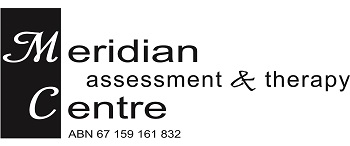Panic disorder & Agoraphobia
Panic disorder, and Panic Disorder and Agoraphobia
You may be suffering from Panic Disorder if:
- You have been cleared by a medical examination
- You are having recurrent unexpected panic attacks
- For at least one month you have persistently:
(a) Worried about having other attacks or
(b) Worried about the implications of the attacks or their consequences (for example, that you are going crazy, losing control, you are having a heart attack or have a serious medical condition despite reassurance by a medical expert to the contrary) or
(c) You have significantly changed your behaviour because of the panic attacks.
Panic Disorder can be diagnosed With or Without Agoraphobia
Agoraphobia
Agoraphobia relates to a condition in which you develop anxiety about being in places or situations from which escape might be difficult (or embarrassing) or in which help may not be available in the event of having an unexpected Panic Attack or panic-like symptoms.
Agoraphobic fears typically involve characteristic clusters of situations that include being outside the home alone; being in a crowd, or standing in a line; being in an enclosed crowded space such as a restaurant or cinema; being on a bridge; and traveling in a bus, train, or automobile. The situations are avoided (e.g., travel is restricted), require the presence of a companion, or else are endured with marked distress or with anxiety about having a Panic Attack or panic-like symptoms. The anxiety or phobic avoidance is not better accounted for by another mental disorder, such as:
- Social Phobia
E.g. Av oidance limited to social situations because of fear of embarrassment
- Specific Phobia
E.g. Avoidance limited to a single situation like elevators
- Obsessive-Compulsive Disorder
E.g. Avoidance of dirt, in someone with an obsession about contamination
- Posttraumatic Stress Disorder
E.g. Avoidance of reminders of a traumatic event
- Separation Anxiety Disorder
E.g. Avoidance of leaving home or relatives
Agoraphobia can be a severely debilitating disorder. Aspects of life that most people take for granted can be affected such as being able to travel, work, take children to school, go shopping or enjoy a night at the cinema. In extreme cases, sufferers may become housebound and completely dependent on others. Sufferers often become socially isolated as their lack of mobility and independence costs them friendships and social connections.
Understandably, Panic Disorder and Agoraphobia can lead to depression, feelings of hopelessness, and loss of self-esteem.
Panic Disorder is diagnosed as With or Without Agoraphobia. Conversely Agoraphobia Without History of Panic Disorder is diagnosed if the agoraphobia is present and related to fear of developing panic-like symptoms (e.g. Dizziness or diarrhoea). For diagnosis the following criteria must also be met:
- the disturbance is not due to the direct physiological effects of a substance (e.g. a drug of abuse, a medication) or a general medical condition.
- If a medical condition is present, the fear described is clearly in excess of that usually associated with the condition.
TREATMENT OF PANIC DISORDER AND PANIC DISORDER WITH AGORAPHOBIA
Treatment of choice for PD and PDA involves Cognitive Behaviour Therapy( CBT) This is a multifaceted approach which incorporates
- Psychoeducation – understanding what panic attacks are, what can trigger them, and factors which potentially trigger, maintain and or escalate the symptoms
- Learning to identify and challenge unhelpful thoughts that trigger panic attacks
- Exposure therapy- gradually and safely confronting feared situations to reduce avoidance behaviours
- Interoceptive exposure – gradually and safely confronting feared sensations that have become associated with panic attacks
- Relaxation techniques and coping strategies to help manage anxiety symptoms in real time

